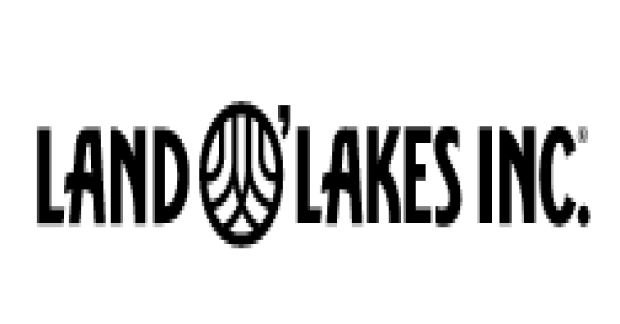Market Size of sorghum seed Industry
| Icons | Lable | Value |
|---|---|---|
|
|
Study Period | 2017 - 2030 |
|
|
Market Size (2024) | USD 695 Million |
|
|
Market Size (2030) | USD 993.8 Million |
|
|
Largest Share by Breeding Technology | Hybrids |
|
|
CAGR (2024 - 2030) | 6.14 % |
|
|
Largest Share by Region | North America |
|
|
Market Concentration | Medium |
Major Players |
||

|
||
|
*Disclaimer: Major Players sorted in no particular order |
Sorghum Seed Market Analysis
The Sorghum Seed Market size is estimated at 695 million USD in 2024, and is expected to reach 993.8 million USD by 2030, growing at a CAGR of 6.14% during the forecast period (2024-2030).
695 Million
Market Size in 2024 (USD)
993.8 Million
Market Size in 2030 (USD)
7.96 %
CAGR (2017-2023)
6.14 %
CAGR (2024-2030)
Largest Market by Breeding Technology
70.81 %
value share, Hybrids, 2023
There is an increase in the demand for hybrid seeds due to an increase in the cultivation area under hybrid seeds and the availability of improved hybrid seed varieties.
Largest Market by Country
31.85 %
value share, United States, 2023
The United States is the largest country in terms of the increase in demand for feed from livestock farmers and improved seed varieties of sorghum available.
Fastest-growing Market by Breeding Technology
6.70 %
Projected CAGR, Hybrids, 2024-2030
It is the fastest-growing segment due to the development of hybrids that are suitable for grain purposes and malt purposes. Also, major companies are focusing on hybrid development.
Fastest-growing Market by Country
11.77 %
Projected CAGR, Romania, 2024-2030
The country has adopted a diverse range of technology sorghum hybrids to address climate change. This adoption has significantly contributed to the growth of the country.
Leading Market Player
16.13 %
market share, Land O’Lakes Inc., 2022

It has made extensive product innovations and expanded its manufacturing bases. It has collaborated with local companies to provide quality seeds to rural farmers.
Hybrid seed sales are driven by the growers’ preference to have higher resistance to diseases and lodging and stress resistance
- In 2022, sorghum hybrid seeds held a major share of 70.2% of the global sorghum seed market, while open-pollinated varieties and hybrid derivatives had a 29.8% share. The hybrid segment is estimated to grow by 52.4% in terms of value during 2023-2030. Hybrids contributed significantly to increased grain yields. Grain productivity has increased by 40% in Asia.
- Due to the high cost of hybrid seeds, the open-pollinated varieties and hybrid derivatives of sorghum are estimated to increase by 37.2% during the forecast period. Nigeria holds Africa's largest land under open-pollinated varieties and hybrid derivatives, accounting for about 20% of overall OPV acreage.
- Only non-transgenic sorghum seeds are available in the global hybrid sorghum seed market. Non-transgenic sorghum seeds account for approximately 70% of the global sorghum seed market. The non-transgenic sorghum seeds segment is estimated to grow, registering a CAGR of 6.8% during the forecast period.
- North America is the leading producer of hybrid sorghum. Hybrid varieties accounted for more than 80% of the sorghum grown in the region. Introducing hybrid sorghum varieties is driven by the rising export demand and the region's growing population. The United States holds a major share in using hybrid varieties in North America, accounting for 98% of sorghum cultivated in the country.
- Large-scale farmers do not use open-pollinated seed varieties, as they have lower yields, are more susceptible to disease, and need a lot of areas to grow compared to hybrid seeds. Thus, the hybrid segment is estimated to grow because of the various benefits associated with hybrids.
North America dominated the market due to higher adoption of hybrids and commercial seeds
- North America is one the largest sorghum producers in the world. The region accounted for 45.6% of the global sorghum seed market in 2022. The sorghum was the third-largest cereal grain grown in the United States, accounting for nearly 30% of all sorghum production worldwide. The area under sorghum cultivation in the United States increased by 30% between 2017 and 2022 because of the increased demand for various uses such as livestock feed and biofuel generation.
- In 2022, Africa accounted for an 18.9% share of the global sorghum seed market which showed a significant growth of 37.1% between 2017 and 2022. Nigeria is the largest sorghum producer in Africa, accounting for 51.4% of the African sorghum seed market in 2022.
- In Asia-Pacific, sorghum is one of the major cereal crops. The region accounted for 16.4% of the global sorghum seed market in 2022. The acreages under sorghum cultivation were 7.1 million ha in 2022, 15.6% more than the previous year. China holds a major share of 21.6% in the global sorghum seed market in 2022.
- In 2022, Brazil and Argentina accounted for 9.5% of the global sorghum seed market. The country's government is providing financial support to sorghum growers to meet the domestic demand due to the increasing demand from China to import sorghum from Brazil and Argentina.
- France is a major sorghum grower and exporter, accounting for 42.7% of the market for sorghum seeds in Europe in 2022. France's cultivation area increased by almost 50% between 2017 and 2022.
- The Middle East has a market share of 1.9% of the global sorghum seed market in 2022, which is comparatively significantly less despite the crop requiring less water.
Sorghum Seed Industry Segmentation
Hybrids, Open Pollinated Varieties & Hybrid Derivatives are covered as segments by Breeding Technology. Africa, Asia-Pacific, Europe, Middle East, North America, South America are covered as segments by Region.
- In 2022, sorghum hybrid seeds held a major share of 70.2% of the global sorghum seed market, while open-pollinated varieties and hybrid derivatives had a 29.8% share. The hybrid segment is estimated to grow by 52.4% in terms of value during 2023-2030. Hybrids contributed significantly to increased grain yields. Grain productivity has increased by 40% in Asia.
- Due to the high cost of hybrid seeds, the open-pollinated varieties and hybrid derivatives of sorghum are estimated to increase by 37.2% during the forecast period. Nigeria holds Africa's largest land under open-pollinated varieties and hybrid derivatives, accounting for about 20% of overall OPV acreage.
- Only non-transgenic sorghum seeds are available in the global hybrid sorghum seed market. Non-transgenic sorghum seeds account for approximately 70% of the global sorghum seed market. The non-transgenic sorghum seeds segment is estimated to grow, registering a CAGR of 6.8% during the forecast period.
- North America is the leading producer of hybrid sorghum. Hybrid varieties accounted for more than 80% of the sorghum grown in the region. Introducing hybrid sorghum varieties is driven by the rising export demand and the region's growing population. The United States holds a major share in using hybrid varieties in North America, accounting for 98% of sorghum cultivated in the country.
- Large-scale farmers do not use open-pollinated seed varieties, as they have lower yields, are more susceptible to disease, and need a lot of areas to grow compared to hybrid seeds. Thus, the hybrid segment is estimated to grow because of the various benefits associated with hybrids.
| Breeding Technology | |||
| |||
| Open Pollinated Varieties & Hybrid Derivatives |
| Region | ||||||||||||||
| ||||||||||||||
| ||||||||||||||
| ||||||||||||||
| ||||||||||||||
| ||||||||||||||
|
Sorghum Seed Market Size Summary
The sorghum seed market is experiencing significant growth, driven by the increasing demand for hybrid varieties that offer higher grain yields and adaptability to various climatic conditions. Hybrid seeds dominate the market, particularly in regions like North America, where they account for a substantial portion of sorghum cultivation. The United States is a key player in this segment, leveraging the rising export demand and its growing population to boost production. In contrast, open-pollinated varieties are gaining traction in regions like Africa, where they are extensively cultivated due to their cost-effectiveness and suitability for local conditions. The market is characterized by a moderate level of consolidation, with major companies like Advanta Seeds, Corteva Agriscience, and KWS SAAT SE & Co. KGaA leading the charge in innovation and distribution.
Globally, sorghum is a crucial crop, particularly in Africa and Asia-Pacific, where it serves as a staple food and a resilient option for areas with limited water availability. The market is witnessing a shift towards varieties with broader adaptability and resistance to biotic and abiotic stresses, driven by changing weather patterns and increased cattle populations. This trend is supported by advancements in seed technology, with companies focusing on developing traits that enhance disease and pest resistance, as well as improving yield and quality. The market's growth is further bolstered by strategic acquisitions and collaborations, such as S&W Seed's acquisition of Chromatin Sorghum, which aims to enhance its hybrid offerings. As the demand for sorghum continues to rise, particularly from the processing industry and dairy farmers, the market is poised for continued expansion.
Sorghum Seed Market Size - Table of Contents
-
1. MARKET SEGMENTATION (includes market size in Value in USD, Forecasts up to 2030 and analysis of growth prospects)
-
1.1 Breeding Technology
-
1.1.1 Hybrids
-
1.1.1.1 Non-Transgenic Hybrids
-
-
1.1.2 Open Pollinated Varieties & Hybrid Derivatives
-
-
1.2 Region
-
1.2.1 Africa
-
1.2.1.1 By Breeding Technology
-
1.2.1.2 By Country
-
1.2.1.2.1 Egypt
-
1.2.1.2.2 Ethiopia
-
1.2.1.2.3 Ghana
-
1.2.1.2.4 Kenya
-
1.2.1.2.5 Nigeria
-
1.2.1.2.6 South Africa
-
1.2.1.2.7 Tanzania
-
1.2.1.2.8 Rest of Africa
-
-
-
1.2.2 Asia-Pacific
-
1.2.2.1 By Breeding Technology
-
1.2.2.2 By Country
-
1.2.2.2.1 Australia
-
1.2.2.2.2 Bangladesh
-
1.2.2.2.3 China
-
1.2.2.2.4 India
-
1.2.2.2.5 Myanmar
-
1.2.2.2.6 Pakistan
-
1.2.2.2.7 Philippines
-
1.2.2.2.8 Thailand
-
1.2.2.2.9 Rest of Asia-Pacific
-
-
-
1.2.3 Europe
-
1.2.3.1 By Breeding Technology
-
1.2.3.2 By Country
-
1.2.3.2.1 France
-
1.2.3.2.2 Germany
-
1.2.3.2.3 Italy
-
1.2.3.2.4 Romania
-
1.2.3.2.5 Russia
-
1.2.3.2.6 Spain
-
1.2.3.2.7 Ukraine
-
1.2.3.2.8 Rest of Europe
-
-
-
1.2.4 Middle East
-
1.2.4.1 By Breeding Technology
-
1.2.4.2 By Country
-
1.2.4.2.1 Iran
-
1.2.4.2.2 Saudi Arabia
-
1.2.4.2.3 Rest of Middle East
-
-
-
1.2.5 North America
-
1.2.5.1 By Breeding Technology
-
1.2.5.2 By Country
-
1.2.5.2.1 Mexico
-
1.2.5.2.2 United States
-
1.2.5.2.3 Rest of North America
-
-
-
1.2.6 South America
-
1.2.6.1 By Breeding Technology
-
1.2.6.2 By Country
-
1.2.6.2.1 Argentina
-
1.2.6.2.2 Brazil
-
1.2.6.2.3 Rest of South America
-
-
-
-
Sorghum Seed Market Size FAQs
How big is the Global Sorghum Seed Market?
The Global Sorghum Seed Market size is expected to reach USD 695.05 million in 2024 and grow at a CAGR of 6.14% to reach USD 993.81 million by 2030.
What is the current Global Sorghum Seed Market size?
In 2024, the Global Sorghum Seed Market size is expected to reach USD 695.05 million.

